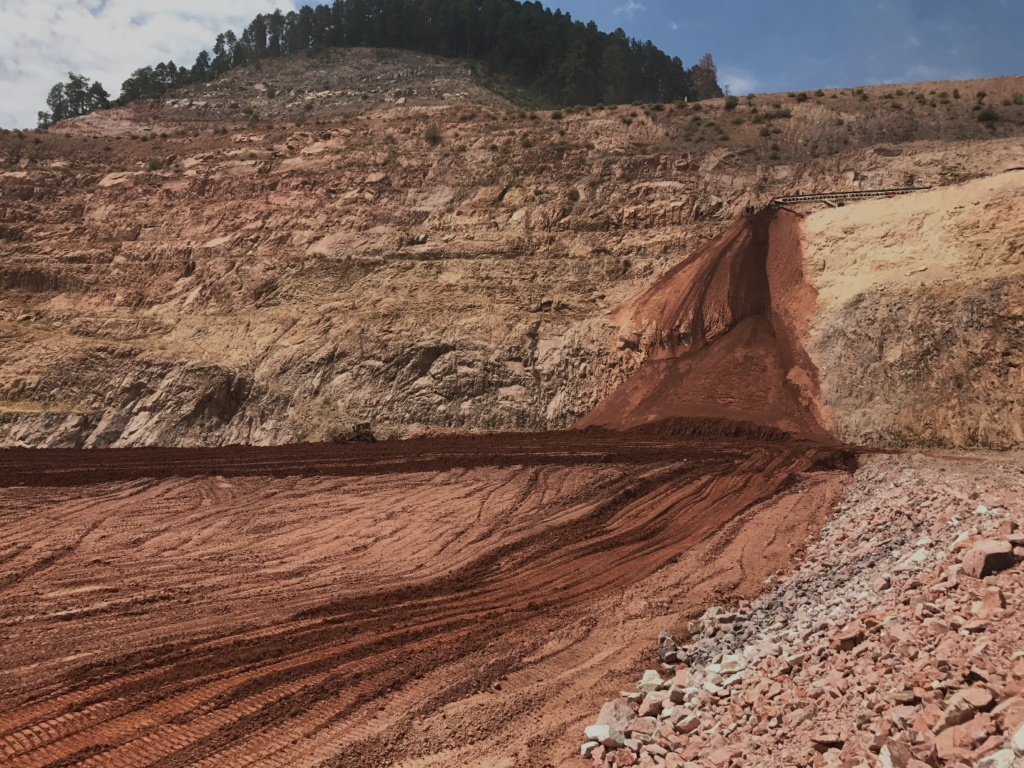
In-Pit Disposal of Filtered Tailings
I’ve written briefly on filtered tailings in other blogs. To re-cap, filtered tailings have the approximate consistency of used, wet coffee grounds from a drip coffee maker. Filtered tailings can be delivered to the TSF by conveyor or truck. Filtered tailings are made by either squeezing moisture out of the tailings, or by using a vacuum force. There are several different devices that can be used to accomplish this dewatering. Filtered tailings are often placed into a facility that is sometimes referred to as a “dry stack”, but that industry term is somewhat misleading to non-practitioners. As I said, the consistency is something akin to used, wet coffee grounds from a drip coffee maker, and that definitely isn’t dry. If filtered tailings are done really well, you can create a facility that is nearly any shape that you desire, as long as you have the right practices in place. Unfortunately, not all filtered tailings are produced at the most geotechnically optimal moisture content, and good engineering practices will need to be adopted in the design. I have been involved with several filtered tailings designs, and they can be just as challenging to develop as conventional tailings facilities.
My first real experience with filtered tailings was in about 2006, in Chihuahua state, Mexico. That facility operated very well, and they could easily run a compactor on the surface of freshly dozed material. They don’t all work that well all the time. That experience was rather brief, but at a neighboring property, my involvement began right at the start, as a green-field project, and continued until facility closure, a period of about 10 years. Let me describe the main features of that facility. It is basically a valley fill facility. There was a limited network of underdrains. There was a dry season placement zone, in the downstream zone, and a wet season placement zone in the upper reaches. There was a simple array of pipes that were to be used to decant stormwater from the wet season zone. The underdrains and decant pipes both outlet into a seepage pond, just beyond the downstream toe of the facility. A small starter berm separated the tailings facility from the seepage pond. The dry season zone was designed to provide stable storage of the wet season tailings. The facility was constructed with benches and step-ins, so that it has a stair-step appearance. The outer slopes were armored with durable rock, primarily for erosion control.
There were many lessons to be learned from my work on that facility. First and foremost, design with flexibility in mind and allow for changing conditions. Anticipate changing conditions. Rainy seasons that are abnormally long and changes in the ore minerology that negatively affect the behavior of the placed tailings, for example.
Several people I have spoken with have indicated to me that filtered tailings facilities will put tailings engineers out of business. But they won’t. Even the “poster child” version of filtered tailings facilities have “misbehaved”, as children often will. You still have to understand whether seasonal placement is necessary, whether it will need compaction, whether pore pressures may accumulate, whether the material may be liquefiable. You still have to solve slope stability requirements and understand whether the placed material will be trafficable.
A filtered tailings facility is not like a waste rock facility, but then again, waste rock facilities have liquefied catastrophically failed. Even waste rock facilities aren’t necessarily simple.
So, keep your thinking caps on, people!

